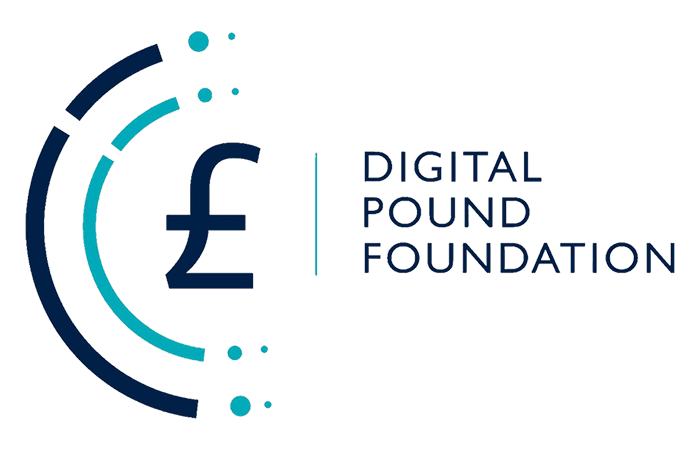Source: Ripple (This post was originally published in 2022 and has been updated as of May 2024)
A few reasons for the aforementioned financial exclusion include cost barriers to opening an account, high remittance fees, a lack of identifying documentation, limited access to physical bank branches, and an economy that still largely operates on cash.
Today, the continent accounts for 70% of the world’s $1 trillion mobile money value, and nearly half of registered mobile money accounts. The value of Africa’s mobile money transactions edged up 39% to $701.4 billion in 2021 from $495 billion in 2020, reinforcing that the future of African financial services is both digital and mobile.
Bottom Line on Mobile Money
Mobile money refers to electronic payment technology that allows money transfers between mobile devices using a SIM card. This allows users to freely transact without needing to connect to a bank or open a bank account.
This technology has been touted as a tool for broadening access to financial services in areas where financial infrastructure is lacking. Across Africa, SIM cards can be used on both smartphones and non-smartphones, widening the number of mobile money users and improving accessibility. Nearly half of the world’s mobile money users are in Africa, making up approximately two-thirds of global mobile money transactions.
Research shows that by 2025, at least 70% of all online transactions will be made with alternative payment methods. In this paradigm, digital wallets, mobile money, and instant payments will hold sway, with card transactions representing only 30% of online volume.
Even as mobile money adoption proliferates, broader financial services are still not reaching the majority of African citizens. Due to the constraints listed previously, consumers are forced to forfeit access to typical legacy banking perks including earning interest on banked savings and building up a credit history.
Interoperability on the continent also remains a major issue amongst banking and payment alternatives.46 For this, a growing number of network providers are working on near-instantaneous payments technologies built on blockchain
Reimagining Remittances
The past few years have seen a steady increase in the use of digital financial services across Africa. After COVID-19 initially disrupted remittance flows, activity surged—in large part, as family members abroad supported African communities. Migrants are actively responding to the needs of their families and taking advantage of improving connectivity as mobile money firms innovate, develop products, and compete to meet the growing demand for broader financial services.
In addition to rising mobile money adoption, inbound remittance payments in Africa surged to over $100 billion last year reflecting a 12.1% CAGR over the past three years. The World Bank estimates the Sub-Saharan region would receive an estimated $55 billion in remittances last year. Still, traditional payment rails saddle users with high fees—up to 9% in the Sub-Saharan region.
There is clearly a demand and market for faster, more affordable remittances in the region, and crypto-enabled payments are making this a reality.
Crypto Use is Catching On
Africa is one the fastest-growing crypto markets in the world, however, it remains one of the smallest. Tech-savvy consumers across Ghana, Nigeria, and South Africa are leading the crypto movement and adopting crypto-enabled payments in lieu of traditional banking services.
Last year, despite the recent bear market environments in crypto, the number of retail transfers of $1,000 actually increased in Sub-Saharan Africa, bucking global trends. One of the reasons: Africans don’t tend to trade crypto speculatively, and instead use digital currencies to solve issues related to financial inclusion and to address limited access to the banking system, including for cross-border remittances.
These behaviors point to resurgent formal and informal dollarization activities. Across developing economies, consumers are showing a preference for digital assets pegged to the dollar (like USDC) to counter economic instability and high inflation.
In Nigeria, Korapay processes billions in cross-border payments via Bitcoin, USDC, and other digital assets while settling transactions in traditional fiat. Forbes highlights how global companies use the company’s services to exchange Nigerian naira for US dollars without even knowing they’re using cryptocurrencies and stablecoins, suggesting a retooling of traditional financial services.
While mobile money can make domestic payment rails more efficient (and address fragmentation and cost issues associated with physical branches like Western Union and Moneygram), crypto-enabled services can reduce costs, increase security, and streamline international transactions for businesses and consumers alike.
Beyond consumers, across over a dozen African nations, interest in central bank digital currencies (CBDCs) is growing. African governments see CBDCs as tools to enhance monetary policy effectiveness and add greater payment system efficiency. In addition, based on central banker surveys, authorities also envision CBDCs as promoting superior payments systems compared to existing mobile money alternatives.
Encountering Barriers to Sustained Success
Africa remains encumbered by a complex, competitive, and fragmented payments landscape resulting in low rates of interoperability. Paradoxically, while the region leads the world in the number of mobile money accounts, compatibility issues mean users must constantly move money in and out of various wallets to complete transactions.
Further, poor interoperability hinders both electronic payments growth and limits enhanced cross-border payment experiences. African Business argues that interoperability also stifles the potential benefits of financial innovation and inclusion. Extending crypto and blockchain technologies into existing mobile money infrastructures — of which there are nearly 150 serving Sub-Saharan Africa alone — is difficult given the prevalence of closed-loop systems. In these systems, available monies have limited use cases.
There is also a significant learning curve for the average person to familiarize themselves with crypto, including using crypto applications and digital wallets. While new technology like mobile money has garnered success, the high rate of adoption may be due to comfort levels with traditional fiat currency.
The growing popularity of mobile money services in Africa has also created a new threat vector for criminals to take advantage of. Increasingly, bad actors target victims in cyberattacks, exploit weaknesses in regulations and identification systems, and commit mobile money enabled crimes.
Historically, illicit activity has been an early outcome of mobile payments adoption, and public hesitation may exist around crypto and other digital payments types if criminality goes unchecked.
More recently, South Africa’s financial regulator announced that all crypto exchanges operating in-country need to obtain licenses by the end of 2023. While broader fintech regulation may not be antithetical to digital asset use, it may add initial friction in terms of adoption and innovation.
Elsewhere, Central African countries like Cameroon and Democratic Republic of Congo have been slow to adopt digital payments due to the lack of regulation and poor infrastructure. Even where infrastructure and consumer awareness are high, adoption can take time given the legacy presence of banking institutions.
Last year’s move by the Central African Republic’s parliament to accept bitcoin as legal tender appeared a meaningful step towards improving the country’s payment infrastructure. However, the move embroiled the country’s economic and monetary community in controversy and the legislation was just recently reversed.
Considering What’s Next
There is opportunity for Africa’s fintechs to piggyback on the success of mobile money to push the adoption of crypto-enabled tools. These tools can make payments even more accessible, approachable and affordable for everyday users. Today, brands like Kotani are pioneering how to use technology like blockchain to reimagine onerous international money transfer and payouts.
Building safeguards like Know Your Customer (KYC) and Anti-Money Laundering (AML) into mobile money transactions that utilize blockchain and crypto technology can grow safe, scalable adoption and address concerns around organized crime. Increasing awareness of these safeguards and educating end-users and institutions on both the benefits and ease of use of crypto is key to gaining trust and buy-in from the public and enabling the successful adoption of this technology.
And as the world’s workforce continues a remote or hybrid-first model, this opens up further possibilities for Africa to stimulate its economy with crypto-enabled payments. The African workforce now has the opportunity to go global, uplifting millions from poverty and enabling remote workers to be efficiently paid with crypto via digital wallets on their mobile devices.
Not only will use cases like these provide opportunities for both traditional banking providers and non-banking entities to serve untapped populations at scale, it will also broaden access to financial services for the massive unbanked population across Africa’s developing economies.
Download the Trends in Regional Payments eBook for more insight into payments progress shaping the industry.
























































